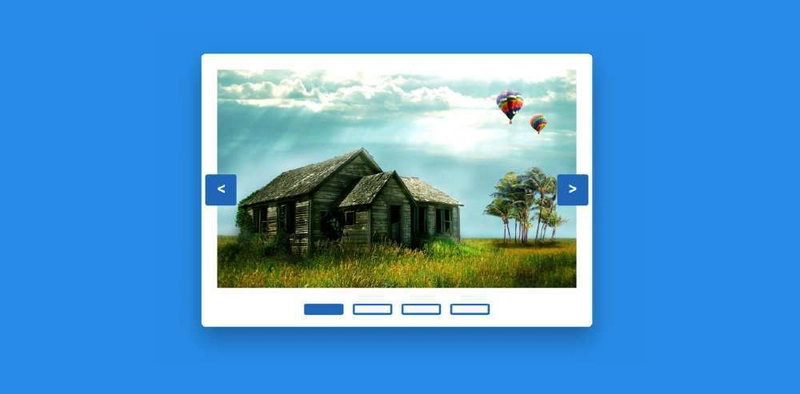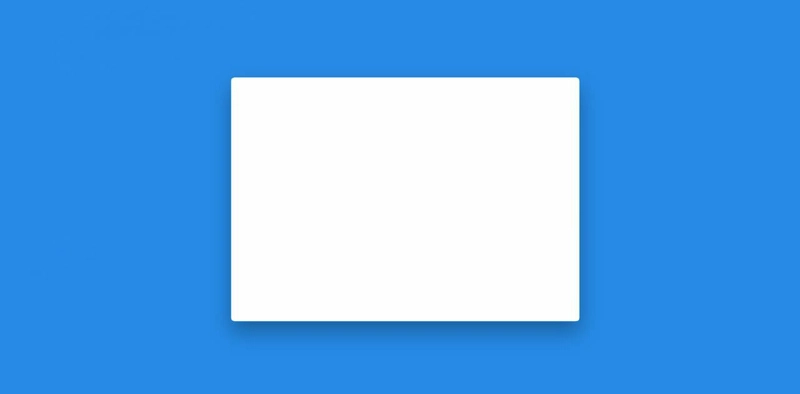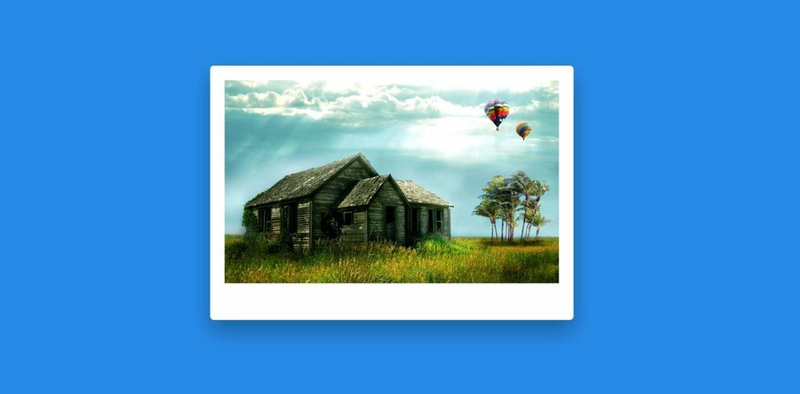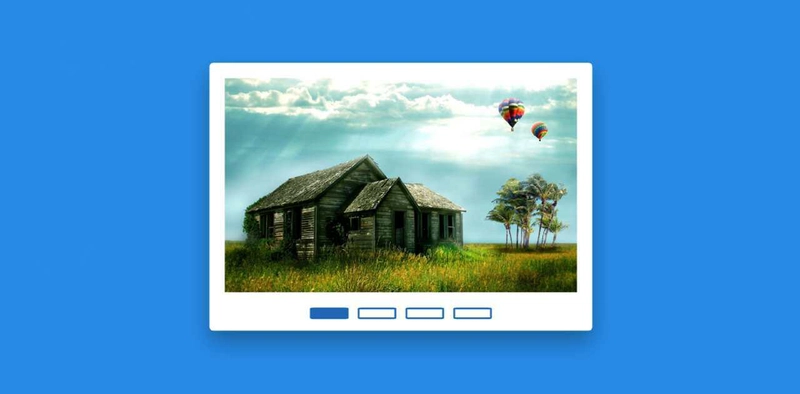如何使用 HTML、CSS 和 JavaScript 创建图像滑块
在本文中,您将学习如何使用 HTML 和 CSS 创建图像滑块。之前,我曾与您分享过多种自动和手动图像滑块的设计。
这是一个漂亮的 CSS 图片滑块设计,包含四张图片和两个用于切换图片的导航按钮。我借助 JavaScript 实现了导航按钮的功能。
观看现场演示,了解它的工作原理。首先,我在网页上创建了一个框。然后,我在这里添加了四张图片,并在每侧使用了两个按钮。图片下方有四个指示点,用于帮助切换图片并指示已打开的图片数量。
这里我使用了 HTML、CSS 和 JavaScript。HTML、CSS 帮助设计并根据需要添加图像。使用 JavaScript 实现了图像更改。
步骤 1:创建图像滑块的基本结构
我使用下面的 HTML 和 CSS 代码创建了一个框。在这个框中,我添加了图片和用于更改图片的按钮。html 图像滑块width: 500px和height: 350px。
<div class="container">
</div>
*,
*:before,
*:after{
padding: 0;
margin: 0;
box-sizing: border-box;
}
body{
height: 100vh;
background: #0690e6;
}
.container{
background-color: #ffffff;
width: 500px;
height: 350px;
position: absolute;
transform: translate(-50%,-50%);
left: 50%;
top: 50%;
border-radius: 5px;
padding: 20px;
box-shadow: 0 15px 30px rgba(0,0,0,0.3);
}
第 2 步:将图像添加到图像滑块
现在我已经在框中添加了图片。这里我用了四张图片。我添加了一个 active 标签来激活第一张图片。图片width: 460px和高度均为 280px。
这里display: none使用了 ,可以完全隐藏图像。然后我添加了display: block,可以帮助再次看到图像。
在第一幅图像的情况下我使用了“活动”,因此在这种情况下可以看到第一幅图像。
<div class="image-container">
<img src="img1.jpg" id="content1" class="active">
<img src="img2.jpg" id="content2">
<img src="img3.jpg" id="content3">
<img src="img4.jpg" id="content4">
</div>
.image-container{
position: relative;
}
img{
position: relative;
width: 460px;
height: 280px;
display: none;
}
.active{
display: block;
}
步骤 3:创建图像指标
现在我为四张图片创建了四个点。如果您使用更多图片,则需要增加这里的点数。我借助按钮来制作这些点。每个点的宽度为 50px,height: 15px这里的背景颜色完全透明。
<div class="dot-container">
<button onclick = "dot(1)"></button>
<button onclick = "dot(2)"></button>
<button onclick = "dot(3)"></button>
<button onclick = "dot(4)"></button>
</div>
.dot-container{
width: 250px;
margin: 20px auto 0 auto;
display: flex;
align-items: center;
justify-content: space-around;
}
button{
outline: none;
cursor: pointer;
}
.dot-container button{
height: 15px;
width: 50px;
border-radius: 10%;
border: 3px solid #076bb8;
background-color: transparent;
}
.dot-container button:nth-child(1){
background-color: #076bb8;
}
步骤 4:创建两个按钮来更改图像
现在我创建了两个按钮来更改图像。这两个按钮的宽度和高度均为 40px,并且position: absolute已使用。position: absolute 有助于将这些按钮放置在特定位置。
<button id="prev" onclick="prev()"> < </button>
<button id="next" onclick="next()"> > </button>
#prev,#next{
height: 40px;
width: 40px;
position: absolute;
background-color: #076bb8;
color: #ffffff;
margin: auto;
top: 0;
bottom: 0;
border: none;
border-radius: 3px;
font-size: 18px;
font-weight: bolder;
}
#prev{
left: 5px;
}
#next{
right: 5px;
}
步骤 6:使用 JavaScript 激活图像滑块
现在是时候使用 JavaScript 实现图像变化了。现在我已经确定了点和图像的常量。
const dots = document.querySelectorAll(".dot-container button");
const images = document.querySelectorAll(".image-container img");
let i = 0; // current slide
let j = 4; // total slides
现在,我使用 JavaScript 执行了“下一步”按钮。这将有助于查看下一张图片。这里我使用了一些基本计算来实现它。如果你懂 JavaScript,就能轻松理解。
function next(){
document.getElementById("content" + (i+1)).classList.remove("active");
i = ( j + i + 1) % j;
document.getElementById("content" + (i+1)).classList.add("active");
indicator( i+ 1 );
}
现在 Previs 按钮已经激活。点击预览按钮,即可看到预览图像。
function prev(){
document.getElementById("content" + (i+1)).classList.remove("active");
i = (j + i - 1) % j;
document.getElementById("content" + (i+1)).classList.add("active");
indicator(i+1);
}
现在我已经激活了指示器。指示器可以帮助你了解哪个图像处于打开状态。当你使用按钮切换图像时,指示器也会随之变化。
function indicator(num){
dots.forEach(function(dot){
dot.style.backgroundColor = "transparent";
});
document.querySelector(".dot-container button:nth-child(" + num + ")").style.backgroundColor = "#076bb8";
}
现在我已经指示指示器更改图像。在此 html css 图像滑块中,您可以借助指示器更改图像。
function dot(index){
images.forEach(function(image){
image.classList.remove("active");
});
document.getElementById("content" + index).classList.add("active");
i = index - 1;
indicator(index);
}

这是一个美观简洁的图像滑块设计,我借助 HTML、CSS 和 JavaScript 制作。如果您在创建此设计(如何在 HTML 中创建图像滑块)时遇到任何困难,请在评论中告诉我Like it if you like this tutorial。
相关文章:
- 响应式页脚 HTML CSS
- 班加罗尔的寄宿学校
- 使用 JavaScript 的简单秒表
- 怀特菲尔德的幼儿园
- JavaScript 密码生成器
- 海得拉巴的国际学校
- 使用 HTML CSS 的侧边栏菜单
您可以访问我的博客以获取更多类似的教程。😊
https://www.foolishdeveloper.com/
 后端开发教程 - Java、Spring Boot 实战 - msg200.com
后端开发教程 - Java、Spring Boot 实战 - msg200.com



